Levoit LV-PUR131 Review
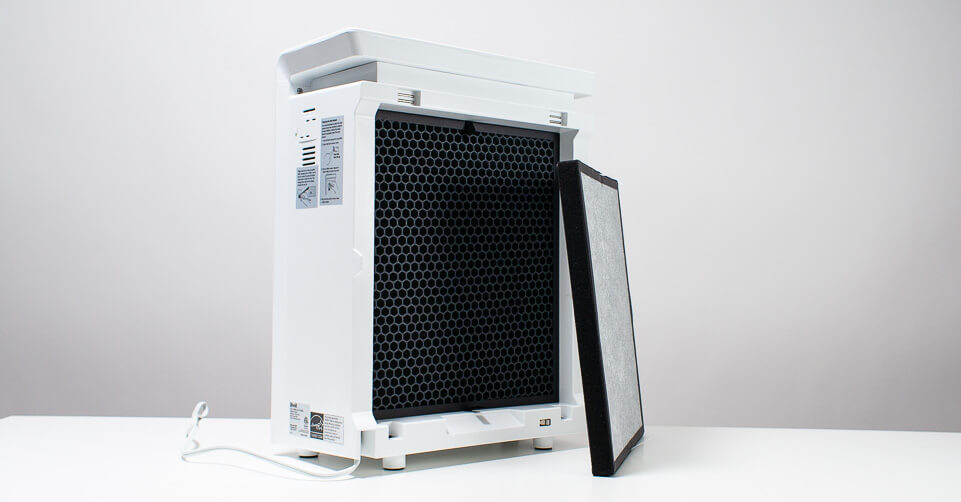
Feature Scores
Pros
- Very good energy efficiency – above average CFM/watt ratios on all fan speeds
- Feature rich for an air purifier in this price range - auto mode with an air quality indicator, sleep mode, a dimmer switch that allows you to turn off all control panel lights, and a very good timer
- This unit is lighter and smaller than top rated units – makes it slightly more portable
- Good filtration – HEPA filter for particle filtration and proper pellet based carbon filter for gas filtration
Cons
- Poor pre-filter implementation – not a separate washable filter
- Not a good value – at the same price point a top rated unit provides almost double the output (cleans air twice as fast and can be operated in a room twice as large)
Editor's Score
Quick Facts
| Particle filter type | HEPA |
|---|---|
| Gas filter type | Carbon |
| Pre-Filter | White fibrous material on one side of HEPA filter |
| Output | Approx. 135 CFM |
| Air Movement | White fibrous material > HEPA filter > carbon filter |
| Number of fan speeds | 3 – low, medium, high |
| Size | 18.5 in. tall x 15 in. wide x 7.5 in. deep |
| Weight | Just under 11 lb. |
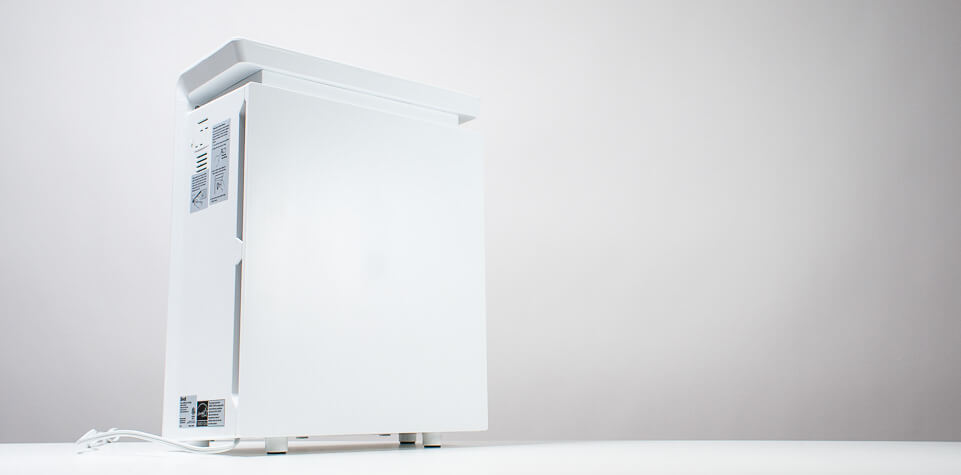



Analysis
A step by step breakdown of the LV-PUR131's performance.
Air Processing Performance
Test Results
In a 150 sq. ft. test environment, with approx. 135 CFM of air processing power, the LV-PUR131 took 19 minutes to lower room particle concentration from an initial concentration of 10,000 particles per cubic ft. (dirty air) down to a final concentration of 1,000 particles per cubic ft. (clean air).
Units with similar output garnered similar results. For example, the GermGuardian AC4825 took 23 minutes, The Honeywell HPA100 took 22 minutes, and the Blue Pure 411 took 18 minutes. All three of these units have a similar output to that of the LV-PUR131 – in the 110 to 140 CFM range (meaning they can process between 110 and 140 cubic ft. of air per minute on maximum fan speed).
Units with greater output were faster. The Winix 5500-2, for example, with approx. 250 CFM of output took only 9 minutes. The Coway Mighty, another unit with approx. 250 CFM of output, took 10 minutes. Thus, these larger units with approx. double the output were approx. twice as fast as smaller units like the LV-PUR131, as expected.
As a continuation of this testing, we proceeded to allow the air purifier to run indefinitely to see just how low of a particle concentration it was able to achieve in the test environment. Our testing procedure and equipment allowed us to measure as low as 100 particles per cubic ft. – no lower. The LV-PUR131 was able to achieve a room particle concentration of 800 particles per cubic ft. This was as low of a concentration as it was able to achieve.
For comparison, other smaller units again garnered similar results. The AC4825, HPA100, and Pure 411 achieved 900, 900, and 600 particles per cubic ft. respectively.
Again, larger units garnered better results. Both the Winix and Coway were able to get room particle concentration down to as low as we were able to measure – 100 particles per cubic ft.
So, in summary, the LV-PUR131 cleans air just as fast as its competitors at approx. the same output. It also cleans air to the same extent – to the same low threshold. Larger units with more output clean the air faster and to a greater extent – to a lower threshold – as expected.
Filter Analysis
Particle Filter
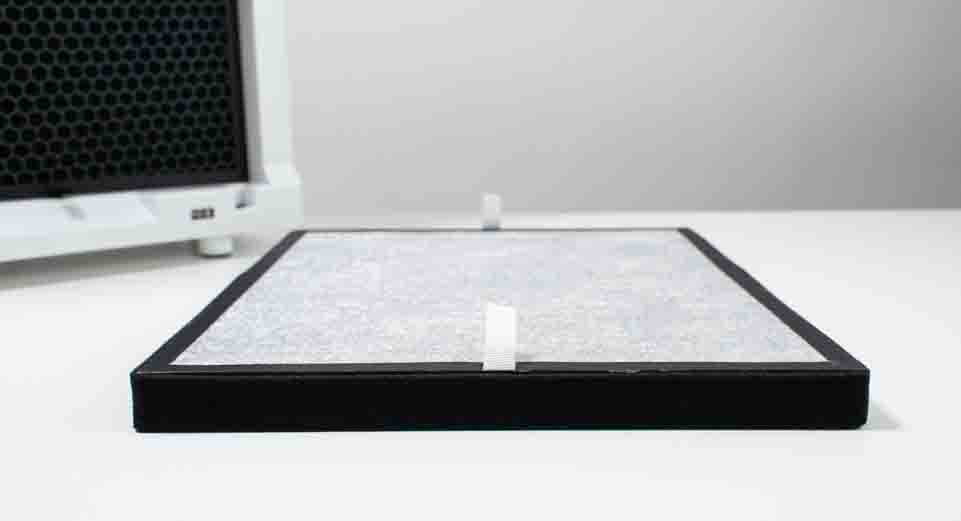
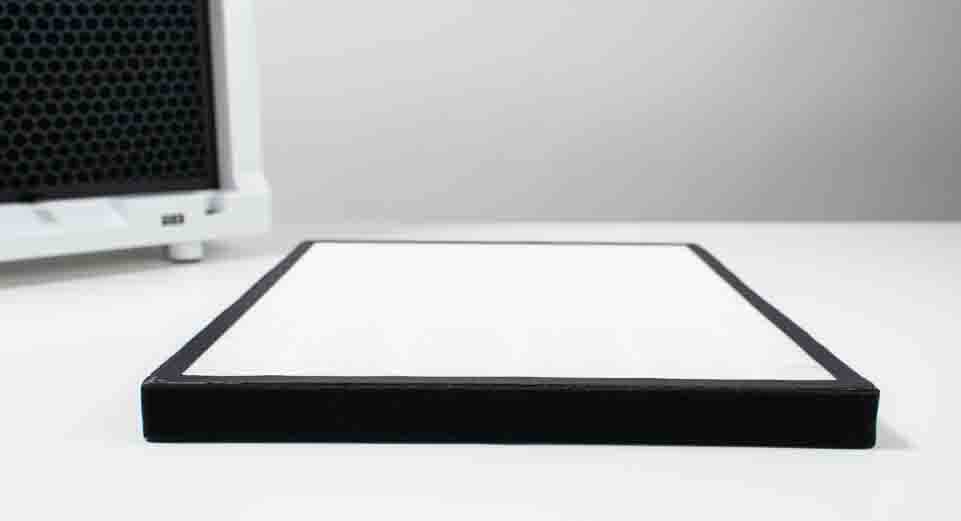
The Levoit LV-PUR131 comes equipped with a HEPA filter for the purpose of particle filtration. Filtering particles involves removing particles like dust, smoke particles, mold spores, and allergens from the air. This is what the unit’s HEPA filter is there for – removing these particles and really any particle at all from the air.
HEPA filtration is the industry standard when it comes to removing particles. The aforementioned GermGuardian AC4825, Honeywell HPA100, Winix 5500-2, and Coway Mighty all come equipped with HEPA filters. So do the majority of air purifiers on the market regardless of price.
Why? Because it’s highly effective and inexpensive to manufacture (and therefore replace). HEPA filters are capable of removing up to 99.97% of particles that travel through them. This is an extremely high efficiency rating.
Gas Filter
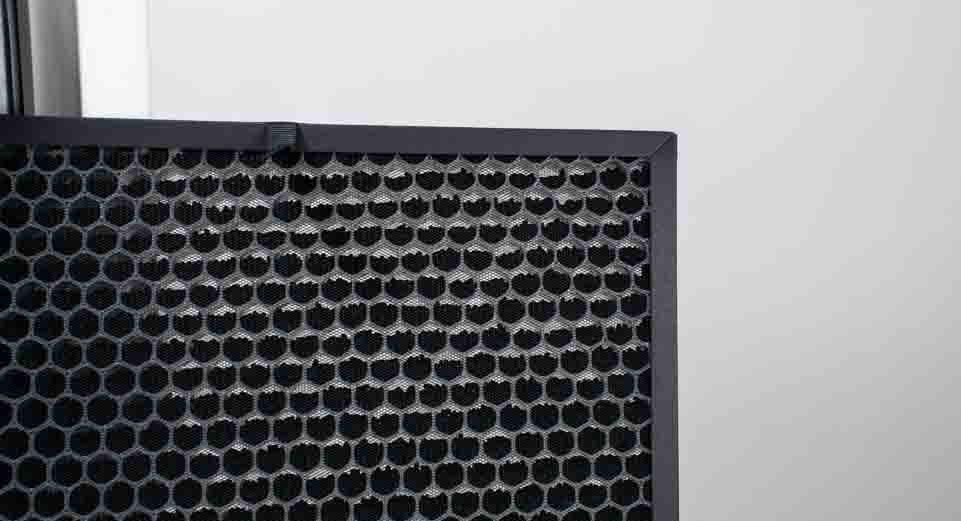
This Levoit air purifier comes equipped with a pellet-based carbon filter. The other popular type of carbon filter on the market is a fibrous filter that’s only coated with carbon. The Levoit’s carbon filter contains actual carbon pellets. This type of filter is more effective for filtering gases than the fibrous type. Thus, if gas filtration is important to you, the Levoit is a great option (outside of its other shortcomings). Units like the AC4825, HPA100, and Pure 411 all have fibrous carbon filters that are not as effective for filtering gases. The Winix 5500-2 has a pellet-based carbon filter, like the Levoit.
Pre-filter
One of the LV-PUR131’s major shortcomings is its lack of a separate dedicated pre-filter. Top rated full size units like the Winix 5500-2 have a mesh pre-filter that’s removable and washable. Cheaper units like the AC4825 and HPA100 have a fibrous carbon filter that doubles as a pre-filter. The LV-PUR131 has a fibrous material attached to its HEPA filter.
This is problematic only if you understand the actual purpose of a pre-filter. The pre-filter’s purpose is to snag larger particles and fibers before they get to the HEPA filter. The HEPA filter is expensive to replace. The pre-filter captures larger particles that would otherwise saturate the HEPA filter very quickly and cause it to need to be replaced more frequently.
On a unit like the Winix 5500-2 the pre-filter can be removed and washed completely separate from the unit’s other filters. Great! The pre-filter can be washed at no cost and the HEPA filter is untouched.
On the LV-PUR131 the pre-filter is a part of the HEPA filter. Thus, once the pre-filter saturates the whole filter – including the HEPA filter – has to be replaced, at cost. This is an unacceptable design flaw that greatly increases the unit’s cost of ownership over time (compared to units that have a separate pre-filter).
Air Movement
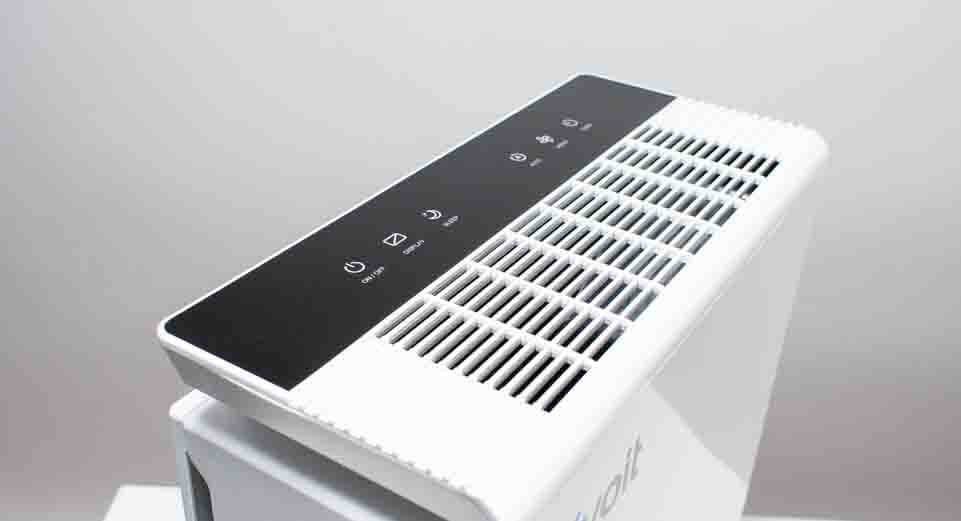
The LV-PUR131 processes approx. 135 cubic ft. of air per minute (135 CFM). This makes it a viable option for rooms up to 150 sq. ft.
If you need to clean the air in a larger room you’ll need an air purifier with greater output. For example, the Winix 5500-2 with approx. 250 CFM can service a room up to 300 sq. ft.
Beyond 300 sq. ft. you’ll need multiple air purifiers in the room (we recommend this option over a single super high CFM unit for reasons we outline here).
Energy Efficiency
A strong positive for the LV-PUR131 is its energy efficiency. It’s more energy efficient than most other air purifiers with similar output. This Levoit draws only 34.8 watts of power on max. fan speed, 17.4 watts on medium, and 9 watts on low. Taking into account its output (CFM) on each fan speed this gives it a CFM/watt ratio of 4 on high, 6 on medium, and 9 on low.
Competitors at the same output generally have lower CFM/watt ratios – usually in the 2 to 3 range on all three fan speeds. For example, the GermGuardian AC4825 has a CFM/watt ratio of 3, 2, and 2 on each of its three fan speeds. The CFM/watt ratio is, of course, the amount of output (CFM) you get for the amount of power (watts) drawn. The higher the ratio, the more CFM you get for the power drawn – the more energy efficient the air purifier is. Thus, the LV-PUR131 with ratios of 4, 6, and 9 is more energy efficient than the AC4825 with ratios of 3, 2, and 2.
Note that larger full size air purifiers are generally more energy efficient than smaller units (even more energy efficient than the LV-PUR131). A unit like the Winix 5500-2 draws only 54.8 watts on its highest fan speed at an output of approx. 250 CFM. It draws under 10 watts of power on each of its three lower fan speeds. This gives it a CFM/watt ratio of 4.6 on turbo (highest fan speed) and between 11 and 12 on lower fan speeds.
So, if you’re looking for an air purifier with maximum energy efficiency: the LV-PUR131 is a great option if you want to limit your search to lower output units. Otherwise, a full size top rated unit like the Winix 5500-2 is recommended.
Noise Output
On higher fan speeds, the LV-PUR131 was an average performer in our noise output tests. It was measured at 65.6 dB on high and 59.1 dB on medium. For comparison, the Honeywell HPA100 was measured at 68.7 dB on high. The GermGuardian AC4825 was measured at 61.2 dB.
On low fan speed it performed quite poorly. The LV-PUR131 was measured at 52.2 dB on low fan speed. The HPA100 was measured at 51.5 dB but the AC4825 and most top rated units we tested were measured well below 50 dB. The AC4825 on low was measured at 44.2 dB. The Winix 5500-2 was measured at 40 dB.
So, in summary, the LV-PUR131 is just about as loud as most other units we tested on high and medium while it’s louder on low. If you’re looking for an air purifier that’s not too loud on high fan speed, this Levoit is a good option. If you’re looking for a whisper quiet unit to run on low fan speed, look elsewhere (a larger unit like the Winix 5500-2 or Coway Mighty is recommended).
Durability
The LV-PUR131 is better built with higher quality parts than units with the same output (AC4825, HPA100, etc.) but of a lower build quality and constructed using lower quality parts than units at approx. the same price (Winix 5500-2).
The unit also comes with a very short warranty – it’s only for 1 year.
Ease of Use
When the LV-PUR131 is turned off a dim red power LED always illuminates. There’s no way to turn it off. When the unit is turned on several LEDs illuminate on the control panel (to show different settings that are selected) but all of these LEDs can be turned off by pressing the “display” button on the unit’s control panel.
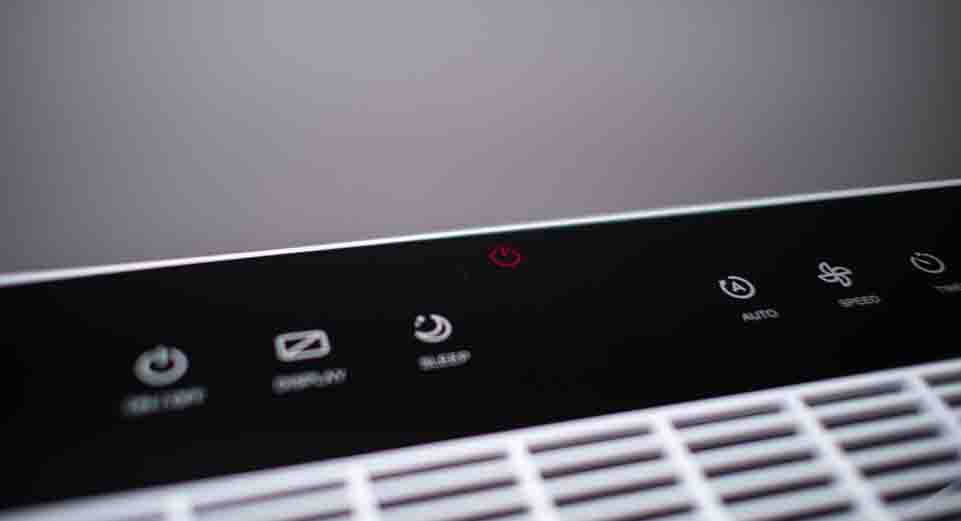
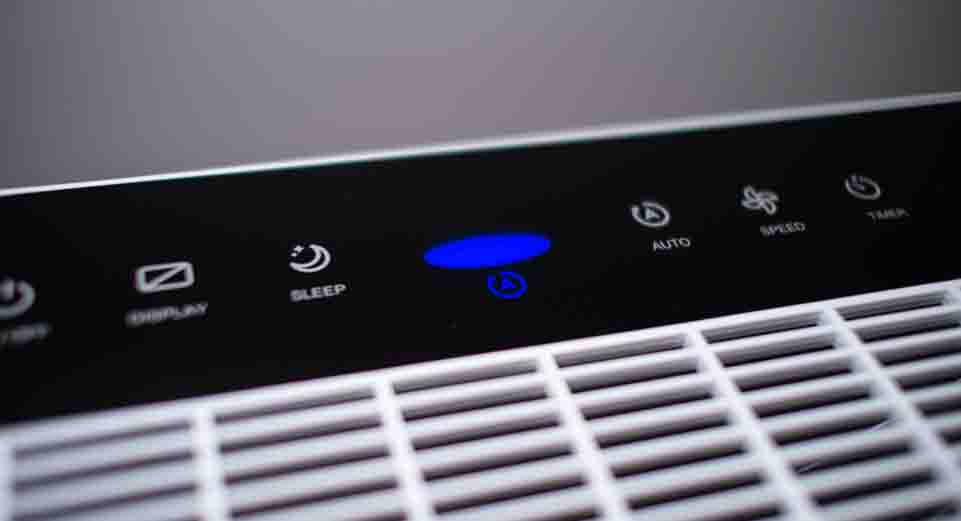
Most other air purifiers on the market do not give you the ability to turn control panel lights on or off. The AC4825, for example, has a single green power LED that illuminates any time the unit is turned on. The power light cannot be turned off. The Winix 5500-2 has several control panel lights, including an air quality light and fan speed lights, that cannot be turned off without selecting the unit’s “sleep” mode. However, when selecting “sleep” mode you lose all manual control of the unit (“sleep” mode is a fully automatic mode); not to mention the fact that a single LED still illuminates to show that “sleep” mode is activated.
So, if you’re looking for an air purifier that gives you full control of control panel lights, the LV-PUR131 is a great choice – unlike most other options on the market.
The LV-PUR131 is surprisingly small and light. Looking at stock photos online you may be inclined to think that it’s the same size as a full size unit like the Winix 5500-2 – but it’s not. The Levoit is only 18.5 inches tall compared to the 24 inch tall Winix. The Levoit is also not as wide or as deep. It’s also lighter – the Levoit weighs just under 11 lb. while the Winix weighs 16.5 lb.
Competitors at the same output are even smaller than the Levoit. The AC4825 is taller - at 22 inches tall – but it’s not nearly as wide and not as deep as the Levoit. The HPA100 is only 14 inches tall with a similar width and depth to the Levoit.
Note that all of these air purifiers – even the full size Winix 5500-2 – are relatively small and light appliances. All of them also have a carrying handle. Is the Levoit more portable than the Winix? Yes. But the Winix is still a very portable appliance overall.
Compared to units at the same output (CFM) the Levoit has more features than most. It comes equipped with a timer, an auto mode with corresponding air quality light, a sleep mode, and the aforementioned dimmer switch to turn control panel lights on or off.
The AC4825 has none of these features. Neither does the Blue Pure 411. The HPA100 has a dimmer switch and timer but no auto modes. Larger full size units come with these features and more. The Winix 5500-2 also comes with an ionization mode and a remote control.
Value
The Levoit LV-PUR131 is one of the worst value air purifiers on the market. At a retail price of approx. $160 it has about half the output (CFM) of the approx. $150 Winix 5500-2. This gives it about half the area of coverage of the Winix. The Winix can be used in rooms up to 300 sq. ft. while the Levoit can only be used in rooms up to 150 sq. ft. The Winix also comes with a separate washable pre-filter, an ionization mode, and a remote control while the Levoit does not.
Units with a similar output to that of the Levoit, retail for much less. The GermGuardian AC4825 at approx. 140 CFM of output (and a similar area of coverage to that of the Levoit) retails for only approx. $80. It doesn’t have any of the features of the Levoit (auto modes, timer, etc.) but it cleans air just as well, at least of particles. The Levoit does have a pellet-based carbon filter while the GermGuardian has a fibrous coated with carbon filter so the Levoit does filter unwanted gases like VOCs and odors better. But chances are you’re primarily looking for an air purifier that filters particles (dust, pollen, etc.) and the GermGuardian does this just as well as the Levoit (both units have a HEPA filter) for about half the price.
So, if you’re looking for an air purifier at the same approx. price as that of the LV-PUR131 our recommendation is that you go with a top rated 250 CFM unit like the Winix instead. If you’re looking for an air purifier at the same approx. output our recommendation is that you pay much less for a budget model like the GermGuardian AC4825 instead.
Add a Comment
Have a question or comment? Let us know below.

Comments